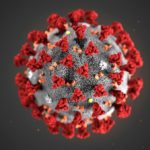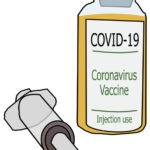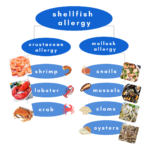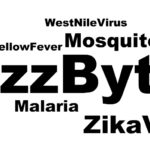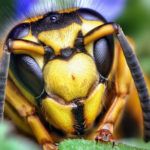allergies, allergy, allergy symptoms, Brood X, cicada, crustacean, dust mites, FDA, food allergy, seafood allergy
Seafood, Cicadas, Dust Mites – OH MY!
As we delve farther into this cicada season, some interesting questions, observations, and research have been taking place. On the forefront is the news of the cross-relation between seafood allergies and cicada allergies. The cicada is the distant cousin of the seafood family and shares cross-reacting proteins. As a result, the FDA is advising against the consumption of cicadas if you have a known seafood allergy. Yes, you read that right – people are eating cicadas this year! And things only get more complicated when we introduce dust mites into the conversation. Read on for more…
Cicadas emerge from the ground every 17 years by the billions. So, why has it become so popular to eat them this time around? The main catalyst for this trend stems from a report from the United Nations back in 2013, in which they described the ways eating bugs could improve the global food sustainability crisis. In addition, bugs like cicadas are a great gluten-free, low-fat source of protein. There are also historical roots to eating cicadas in the United States. Some Native American tribes ate insects and would certainly eat cicadas when their 17-year cycle came around. These factors amongst others have combined to create the right environment for cicada-eating popularity in 2021.
While this might sound like a great sales-pitch to fry up some cicadas, the Food and Agriculture Organization of the U.N. later reported that the allergenic risks of eating insects need more investigative research before we all dig in. And this is what prompted the connection being made between cicadas and seafood, like shrimp and lobster. Both belong to the arthropod family, causing some to even nickname cicadas “tree shrimp”. Simply put, those who are allergic to seafood, such as shrimp, are likely to have an allergic reaction to cicadas and should avoid consuming both.
If that wasn’t bizarre enough, there is a third factor at play involving dust mites. As explained in the 2018 volume of Molecular Immunology, “Various insect allergens have been identified including tropomyosin and arginine kinase, which are both pan-allergens known for their cross-reactivity with homologous proteins in crustaceans and house dust mite.” Essentially, if someone is allergic to dust mites there is concern that they are also allergic to cicadas due to the allergenic connection between cicadas and crustaceans. It should also be noted that there is a close relation between cicadas, cockroaches, crickets, and other insects. So, those who have a known allergy to these insects should steer clear of cicadas as well.
This cross-reactivity is not well known even among allergists, but is incredibly important for allergists to be aware of and to consistently learn more about these as cultural trends shift and develop. And while many people in the U.S. might turn their noses up at the idea of eating cicadas, it is still vital for us to understand the connections that exist between allergens. In summary, while cicadas might put a crunch in your cookie it may be best to stick with chocolate chips!
Recent
Popular



